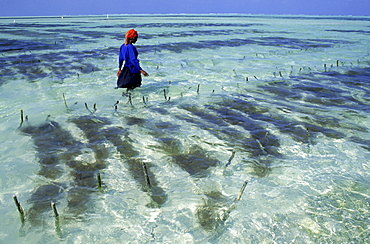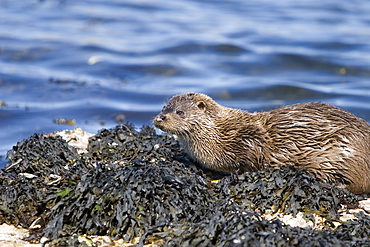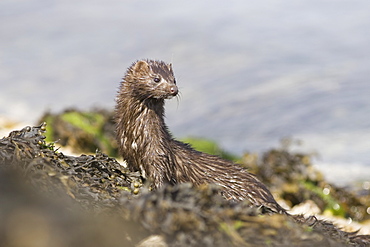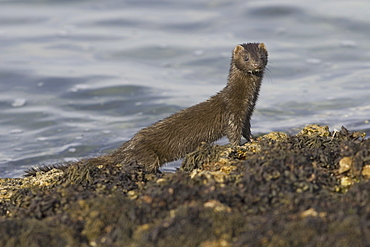Recent searches
Loading...
1116-31830 - Caribbean, Bahamas, Little Bahama Bank, Lemon Shark (Negaprion brevirostris) near seafloor.
1116-30425 - Australia, West Australian Seahorse (Hippocampus elongatus)
1116-30422 - California, Garibaldi (Hypsypops rubicundus) in kelp forest (Macrocystis pyrifera).
1116-19967 - Young boy standing on a beach, Barkley Sound, Vancouver Island, British Columbia
857-79907 - The last rays of sun penetrate the clouds behind Crystal Pier at sunset; San Diego, CA.
857-56558 - A dead blue crab amidst oil soaked beach and seaweed.
857-9202 - Swahili woman in the beds of seaweed grown in the Indian Ocean at Paje, Zanzibar.
857-9195 - Swahili woman harvests seaweed grown in beds in the Indian Ocean at Paje, Zanzibar.
857-9193 - Swahili woman in the beds of seaweed grown in the Indian Ocean at Paje, Zanzibar.
857-9198 - Swahili women in the beds of seaweed grown in the Indian Ocean at Paje, Zanzibar.
857-9201 - Swahili woman in the beds of seaweed grown in the Indian Ocean at Paje, Zanzibar.
743-979 - Purple sandpiper (Calidris maritima), Bamburgh beach, Northumberland, England, United Kingdom, Europe
743-948 - African black oystercatcher (Haematopus moquini), Boulders Beach, Cape Town, South Africa, Africa
1198-145 - Eider duck (somateria molissima), northumberland, uk, drake sitting in seaweed.
911-8434 - Oil pollution in Lyme Regis harbour, probably from a fishing vessel, Dorset, England, United Kingdom, Europe
911-8407 - Seaweed washed up on the beach after a storm at Kimmeridge Bay, Jurassic Coast, UNESCO World Heritage Site, Dorset, England, United Kingdom, Europe
849-175 - St. Michael's Mount near to Marazion at dawn, Cornwall, England, United Kingdom, Europe
911-8288 - Rock formations and seaweed at the Bay of Laig at Cleadale on the Isle of Eigg, looking towards the Isle of Rhum, Scotland, United Kingdom, Europe
911-8290 - Rock formations and seaweed at the Bay of Laig at Cleadale on the Isle of Eigg, looking towards the Isle of Rhum, Scotland, United Kingdom, Europe
911-8283 - Rock formations and seaweed at the Bay of Laig at Cleadale on the Isle of Eigg, looking towards the Isle of Rhum, Scotland, United Kingdom, Europe
911-8286 - Rock formations and seaweed at the Bay of Laig at Cleadale on the Isle of Eigg, looking towards the Isle of Rhum, Scotland, United Kingdom, Europe
911-8287 - Rock formations and seaweed at the Bay of Laig at Cleadale on the Isle of Eigg, looking towards the Isle of Rhum, Scotland, United Kingdom, Europe
911-8289 - Rock formations and seaweed at the Bay of Laig at Cleadale on the Isle of Eigg, looking towards the Isle of Rhum, Scotland, United Kingdom, Europe
911-8291 - Rock formations and seaweed at the Bay of Laig at Cleadale on the Isle of Eigg, looking towards the Isle of Rhum, Scotland, United Kingdom, Europe
930-108 - Harbour / Common seal (Phoca vitulina) resting as tide approaches. NE Scotland (RR)
930-111 - Harbour / Common seal (Phoca vitulina). NE Scotland (A4 only).
930-110 - Harbour / Common seal (Phoca vitulina) about to be lifted by the tide. NE Scotland (RR)
799-1766 - The Pap of Glencoe from the shores of Loch Leven, Ballachulish, Highland, Scotland, United Kingdom, Europe
1022-79 - Silver drummer (kyphosus sydneyanus) silvery grey colour, feeding on brown seaweed, wild, day, schools, marine protected area, diving off Rottnest Island, Western Australia, Indian Ocean. MORE INFO: other name common buffalo bream, dark tail and a distinctive dark line that looks a little like a moustache below the eye, occur in large schools. Distribution more widespread throughout Australia.
908-42 - Lumpsucker (Cyclopterus lumpus). Male in breeding colours, swimming amongst seaweed.
Babbacombe, Torquay, South Devon, UK.
1003-67 - Gannet (Morus bassanus) landing with nesting material. Bass Rock, Scotland
1003-3 - Grey seals (Halichoerus grypus). Farne Islands, Seahouses, Northumberland, UK
1022-86 - Western buffalo bream (kyphosus cornelii) silvery brown colour, feeding on seaweed, schools, wild, day, silvery brown colour, marine protected area, diving off Rottnest Island, Western Australia, Indian Ocean. MORE INFO: other name buff bream, lacks the dark edging on the tail fin and dark line under the eye. Restricted to WA as name suggests.
1022-91 - Silver drummer (kyphosus sydneyanus) silvery grey colour, feeding on brown seaweed, wild, day, schools, marine protected area, diving off Rottnest Island, Western Australia, Indian Ocean. MORE INFO: other name common buffalo bream, dark tail and a distinctive dark line that looks a little like a moustache below the eye, occur in large schools. Distribution more widespread throughout Australia.
1022-87 - Western buffalo bream (kyphosus cornelii) silvery brown colour, feeding on seaweed, schools, wild, day, silvery brown colour, marine protected area, diving off Rottnest Island, Western Australia, Indian Ocean. MORE INFO: other name buff bream, lacks the dark edging on the tail fin and dark line under the eye. Restricted to WA as name suggests.
908-170 - Common Cuttlefish (Sepia officinalis). Pair amongst seaweed, on seabed.
Babbacombe, Torquay, South Devon, UK.
930-65 - A Grey Seal pup (Halichoerus grypus) suckling milk from its mother, Pentland Firth, Scotland.
930-79 - A dead juvenile Northern Bottlenose Whale (Hyperoodon ampullatus) lying stranded on its side in shallow water, it's eye visible, North Kessock, Scotland.
908-169 - Common Cuttlefish (Sepia officinalis). Pair amongst seaweed, on seabed.
Babbacombe, Torquay, South Devon, UK.
1003-1 - Grey seal (Halichoerus grypus). Farne Islands, Seahouses, Northumberland, UK
1003-68 - Gannet (Morus bassanus) carrying seaweed for nesting material. Bass Rock, Scotland
1003-4 - Grey seals (Halichoerus grypus). Farne Islands, Seahouses, Northumberland, UK
930-60 - Two resting female Grey Seals (Halichoerus grypus) on a sandy beach, Pentland Firth, Scotland.
1003-57 - Gannets (Morus bassanus) carrying seaweed for nesting material. Bass Rock, Scotland
930-63 - A Grey Seal pup (Halichoerus grypus) resting on seaweed, Pentland Firth, Scotland.
1003-5 - Grey seals (Halichoerus grypus). Farne Islands, Seahouses, Northumberland, UK
908-40 - Lumpsucker (Cyclopterus lumpus). Male in breeding colours, swimming amongst seaweed.
Babbacombe, Torquay, South Devon, UK.
1003-115 - Turnstone (Arenaria interpres) foraging among seaweed. Northumberland, UK
908-41 - Lumpsucker (Cyclopterus lumpus). Male in breeding colours, swimming amongst seaweed.
Babbacombe, Torquay, South Devon, UK.
908-39 - Lumpsucker (Cyclopterus lumpus). Male in breeding colours, swimming amongst seaweed.
Babbacombe, Torquay, South Devon, UK.
908-167 - Common Cuttlefish (Sepia officinalis).
Group swimming through seaweed.
Babbacombe, Torquay, South Devon, UK.
908-168 - Common Cuttlefish (Sepia officinalis). Group swimming through seaweed.
Babbacombe, Torquay, South Devon, UK.
930-66 - A Grey Seal pup (Halichoerus grypus) resting on seaweed looking right at the camera, Pentland Firth, Scotland.
1022-80 - Jourdan's turban (turbo jourdani) large gastropod shell, reddish-brown, Rottnest Island reef, wild, day, marine protected area, free-diving off, cool temperate waters of Western Australia. MORE INFO: Marine plant common kelp, a dominant feature of the underwater landscape. Protected areas are covered in lush growth of diverse algae, also red algea are here.
930-49 - A Common Seal pup (Phoca vitulina) resting on seaweed covered shingle, North Kessock, Scotland.
988-87 - Eurasian river otter (Lutra lutra) eating a male lumpsucker (Cyclopterus lumpus) fish, also known as a sea hen or scarclagger. Hebrides, Scotland
988-34 - Eurasian river otter (Lutra lutra). Hebrides, Scotland
988-61 - Eurasian river otter (Lutra lutra) eating a large crab. Large fish and crabs are difficult to constrain and eat in the water so are often brought ashore. Otters will sometimes swim realtively long distances in order to do so. Hebrides, Scotland
988-117 - Common seal (Phoca vitulina). Hebrides, Scotland
988-28 - Eurasian river otter (Lutra lutra). Hebrides, Scotland
988-40 - Eurasian river otter (Lutra lutra) foraging in and among the seaweed. Otters on Scotland's west coast and islands have adapted well to making a living in the marine environment. Hebrides, Scotland
988-46 - Eurasian river otter (Lutra lutra) resting in the seaweed and rocks. Otters spend a great deal of time resting, usually close to the water's edge or on rocks just offshore. This time is spent sleeping and preening fur etc. Notice the recent injuries sustained by this otter around the head and neck area. Hebrides, Scotland
988-86 - Eurasian river otter (Lutra lutra) eating fish, long-spined bullhead (Taurulus bubalis). Hebrides, Scotland
988-75 - Eurasian river otter (Lutra lutra). Hebrides, Scotland.
988-29 - Eurasian river otter (Lutra lutra). Hebrides, Scotland
988-67 - Eurasian river otter (Lutra lutra) mother and cub. Cubs often have darker fur than their mothers and for the first few months are much more 'buoyant' in the water. Hebrides, Scotland
988-25 - Eurasian river otter (Lutra lutra). Hebrides, Scotland
988-59 - Eurasian river otter (Lutra lutra) resting on seaweed. Otters spend a great deal of time resting ashore, usually near to the water's edge. This time is spent sleeping and preening fur etc. Visits ashore may also be to find fresh water to drink. Hebrides, Scotland
988-109 - Eurasian river otter (Lutra lutra). Otters in western Scotland have adapted well to life in a marine environment, though proximity to sources of fresh water is essential. Hebrides, Scotland
988-65 - Eurasian river otter (Lutra lutra) eating a male lumpsucker (Cyclopterus lumpus) fish, also known as a sea hen or scarclagger. Hebrides, Scotland
988-69 - Eurasian river otter (Lutra lutra). Hebrides, Scotland
988-80 - Eurasian river otter (Lutra lutra) resting in the seaweed and rocks. Otters spend a great deal of time resting, usually close to the water's edge or on rocks just offshore. This time is spent sleeping and preening fur etc. Notice the recent injuries sustained by this otter around the head and neck area. Hebrides, Scotland
988-82 - Eurasian river otter (Lutra lutra) resting on seaweed. Otters spend a great deal of time resting ashore, usually near to the water's edge. This time is spent sleeping and preening fur etc. Visits ashore may also be to find fresh water to drink. Hebrides, Scotland
988-99 - Eurasian river otter (Lutra lutra) sprainting on high point. The spraint is a method of marking territory and high points are a favoured location, even those washed by tides.
988-77 - Eurasian river otter (Lutra lutra) foraging in and among the seaweed. Otters on Scotland's west coast and islands have adapted well to making a living in the marine environment. Hebrides, Scotland
988-58 - Eurasian river otter (Lutra lutra) resting on seaweed. Otters spend a great deal of time resting ashore, usually near to the water's edge. This time is spent sleeping and preening fur etc. Visits ashore may also be to find fresh water to drink. Hebrides, Scotland
988-54 - Eurasian river otter (Lutra lutra) resting in the seaweed and rocks. Otters spend a great deal of time resting, usually close to the water's edge or on rocks just offshore. This time is spent sleeping and preening fur etc. Notice the recent injuries sustained by this otter around the head and neck area. Hebrides, Scotland
988-30 - Eurasian river otter (Lutra lutra). Hebrides, Scotland
988-105 - Eurasian river otters (Lutra lutra) resting. Otters take regular breaks during their foraging activities, often choosing high points or islets just offshore in order to sleep, preen and play. Hebrides, Scotland
988-51 - Eurasian river otter (Lutra lutra) resting in the seaweed and rocks. Otters spend a great deal of time resting, usually close to the water's edge or on rocks just offshore. This time is spent sleeping and preening fur etc. Notice the recent injuries sustained by this otter around the head and neck area. Hebrides, Scotland
988-36 - Eurasian river otter (Lutra lutra). Hebrides, Scotland
988-27 - Eurasian river otter (Lutra lutra). Hebrides, Scotland
988-53 - Eurasian river otter (Lutra lutra) resting in the seaweed and rocks. Otters spend a great deal of time resting, usually close to the water's edge or on rocks just offshore. This time is spent sleeping and preening fur etc. Notice the recent injuries sustained by this otter around the head and neck area. Hebrides, Scotland
988-91 - Eurasian river otter (Lutra lutra) having caught Greater spotted dogfish (Scyliorhinus stellaris). The otter took only the innards of the dogfish by opening a short section of skin behind the pectoral fin (see images under 'Greater spotted dogfish'). Hebrides, Scotland (RR)
988-115 - American mink (Mustela vison). Non-native species in the UK considered a threat to ground-nesting birds and water voles in particular. Widespread as a result of escapes from fur farms since the 1950s. Hebrides, Scotland
988-56 - Eurasian river otter (Lutra lutra) resting on seaweed. Otters spend a great deal of time resting ashore, usually near to the water's edge. This time is spent sleeping and preening fur etc. Visits ashore may also be to find fresh water to drink. Hebrides, Scotland
988-64 - Eurasian river otter (Lutra lutra) eating fish, long-spined bullhead (Taurulus bubalis). Hebrides, Scotland
988-88 - Eurasian river otter (Lutra lutra) mother and cub resting in seaweed. Hebrides, Scotland
988-72 - Eurasian river otter (Lutra lutra) in the marine environment to which they have adapted so successfully. Hebrides, Scotland.
988-78 - Eurasian river otter (Lutra lutra) resting in the seaweed and rocks. Otters spend a great deal of time resting, usually close to the water's edge or on rocks just offshore. This time is spent sleeping and preening fur etc. Notice the recent injuries sustained by this otter around the head and neck area. Hebrides, Scotland
988-57 - Eurasian river otter (Lutra lutra) among seaweed and rocks. Hebrides, Scotland
988-112 - American mink (Mustela vison). Non-native species in the UK considered a threat to ground-nesting birds and water voles in particular. Widespread as a result of escapes from fur farms since the 1950s. Hebrides, Scotland
988-100 - Eurasian river otter (Lutra lutra) eating fish. Otters in western Scotland have adapted well to life in a marine environment, though proximity to sources of fresh water is essential. Hebrides, Scotland
988-63 - Eurasian river otter (Lutra lutra) having caught Greater spotted dogfish (Scyliorhinus stellaris). The otter took only the innards of the dogfish by opening a short section of skin behind the pectoral fin (see images under 'Greater spotted dogfish'). The rest of the fish, still alive, was left on the shore and never retrieved. Perhaps the tough shark skin and battling fish are too much work when other food is plentiful? Hebrides, Scotland
988-106 - Eurasian river otter (Lutra lutra). Otters in western Scotland have adapted well to life in a marine environment, though proximity to sources of fresh water is essential. Hebrides, Scotland
988-52 - Eurasian river otter (Lutra lutra) resting in the seaweed and rocks. Otters spend a great deal of time resting, usually close to the water's edge or on rocks just offshore. This time is spent sleeping and preening fur etc. Notice the recent injuries sustained by this otter around the head and neck area. Hebrides, Scotland
988-116 - Common seal (Phoca vitulina). Hebrides, Scotland
988-70 - Eurasian river otter (Lutra lutra) catching and eating snake pipefish (Entelerus aequoreus). Hebrides, Scotland.



































































































